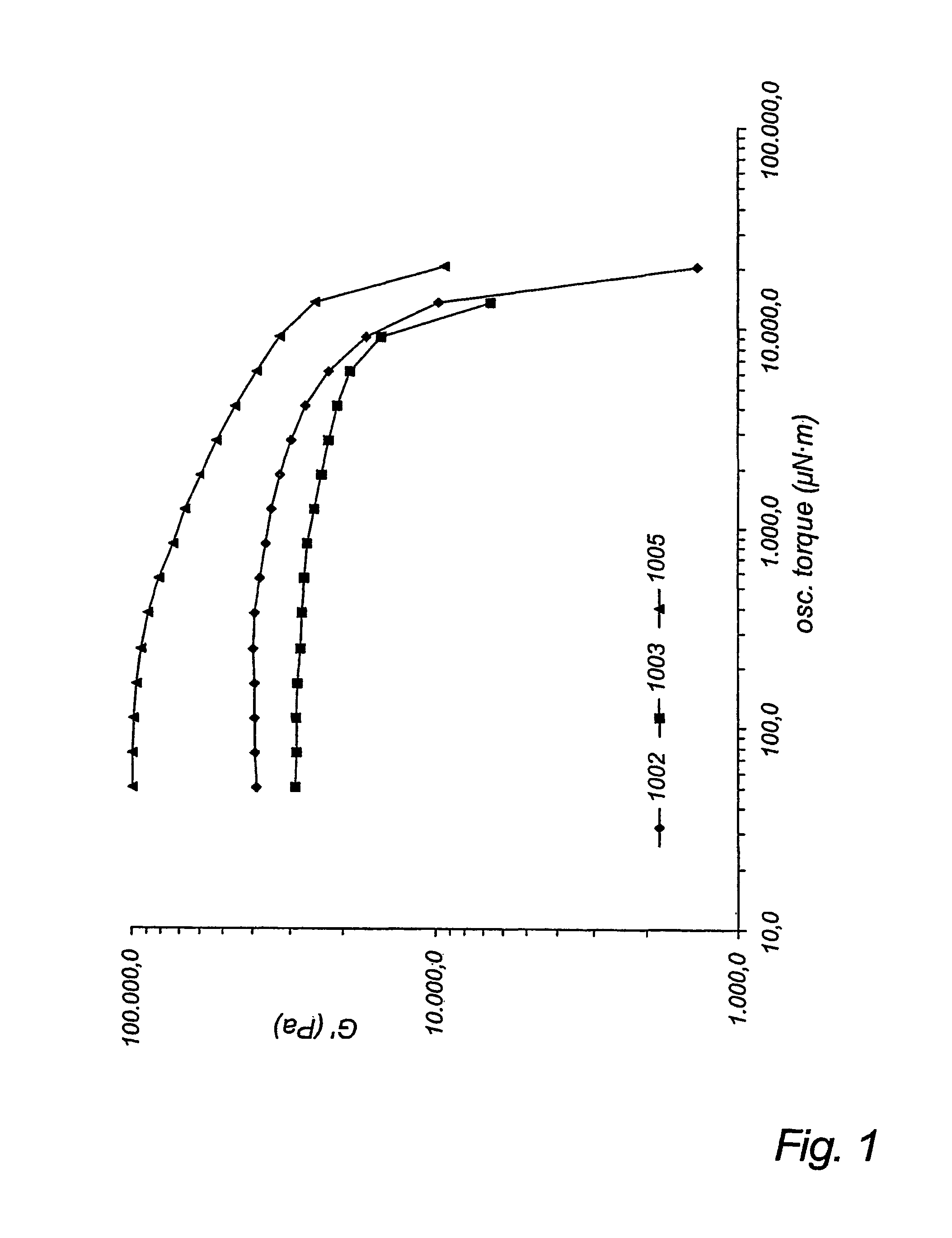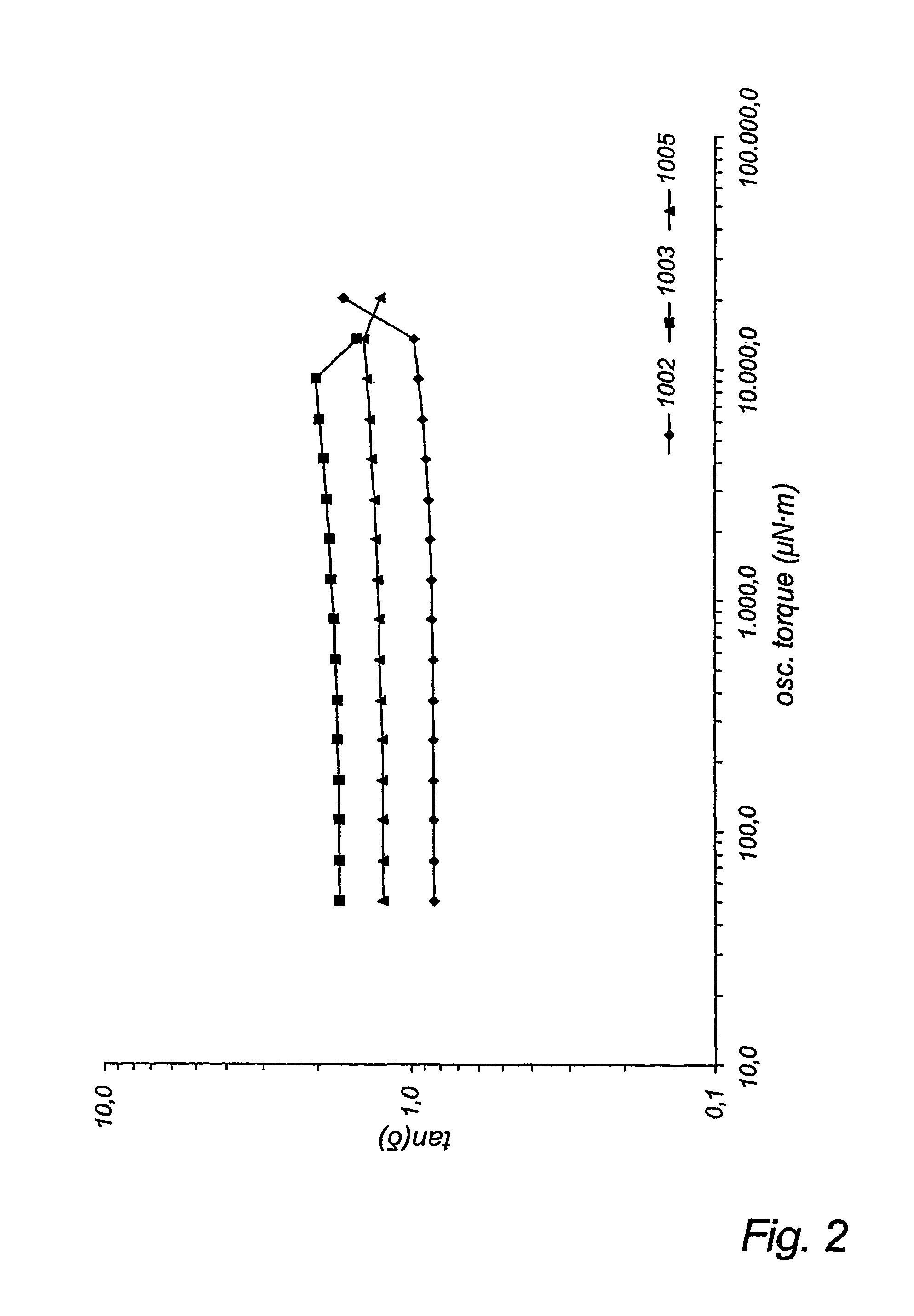Biodegradable chewing gum comprising at least one high molecular weight biodegradable polymer
a biodegradable, polymer technology, applied in the field of biodegradable chewing gum, can solve the problems of reducing the effectiveness of conventional chewing gum formulations, and reducing the resistance of intermolecular forces. , the effect of increasing the intermolecular force and increasing the entanglemen
- Summary
- Abstract
- Description
- Claims
- Application Information
AI Technical Summary
Benefits of technology
Problems solved by technology
Method used
Image
Examples
example 1
Preparation of Resin
[0094]A resin sample was produced using a cylindrical glass, jacketed 10 L pilot reactor equipped with glass stir shaft and Teflon stir blades and bottom outlet. Heating of the reactor contents was accomplished by circulation of silicone oil, thermostated to 130° C., through the outer jacket. D,L-lactide (4.877 kg, 33.84 mol) was charged to the reactor and melted by heating to 140° C. for 6 h. After the D,L-lactide was completely molten, the temperature was reduced to 130° C., and stannous octoate (1.79 g, 4.42×10−3 mol), 1,2-propylene glycol (79.87 g, 1.050 mol), and ε-caprolactone (290.76 g, 2.547 mol) were charged to the reactor. After the mixture became homogeneous, stirring was continued for 24 h at 130° C. At the end of this time, the bottom outlet was opened, and molten polymer was allowed to drain into a Teflon-lined paint can.
[0095]Characterization of the product indicated Mn, =5,700 g / mol and Mw=7,100 g / mol (gel permeation chromatography with online MAL...
example 2
Preparation of LMWE Elastomer
[0096]A 515 g LMWE sample was synthesized within a dry N2 glove box, as follows. Into a 500 mL resin kettle equipped with overhead mechanical stirrer, 0.73 g 1,2-propane diol (3.3 mL of a 22.0%(w / v) solution in methylene chloride), and 0.152 g Sn(Oct)2 (3.56 ml of a 4.27% (w / v) solution in methylene chloride) were charged under dry N2 gas purge. The methylene chloride was allowed to evaporate under the N2 purge for 15 min. Then ε-caprolactone (300 g, 2.63 mol) and δ-valerolactone (215 gm. 2.15 mol) were added. The resin kettle was submerged in a 130° C. constant temperature oil bath and stirred for 14 h. Subsequently the kettle was removed from the oil bath and allowed to cool at room temperature. The solid, elastic product was removed in small pieces using a knife, and placed into a plastic container.
[0097]Characterization of the product indicated Mn=59,900 g / mol and Mw=74,200 g / mol (gel permeation chromatography with online MALLS detector) and Tg=−70° ...
example 3
Preparation of HMVE
[0098]A HMWE sample according to the invention was synthesized in a dry N2 glove box, as follows. Into a 500 mL resin kettle equipped with overhead mechanical stirrer was charged 0.037 g Sn(Oct)2 (3.4 ml of a 1.10% (w / v) solution in methylene chloride) under dry N2 gas purge. The methylene chloride was allowed to evaporate under the N2 purge for 15 min. Then, pentaerythritol (0.210 g, 1.54×10−3 mol), ε-caprolactone (79.0 g, 0.692 mol), TMC(8.0 g, 0.078 mol) and δ-valerolactone (38.0 g, 0.380 mol) were added. The resin kettle was submerged in a 130° C. constant temperature oil bath and stirred for 14 h. Subsequently the kettle was removed from the oil bath and allowed to cool at room temperature. The solid, elastic product was removed in small pieces using a knife, and placed into a plastic container.
[0099]Characterization of the product indicated Mn=64,600 g / mol and Mw=165,200 g / mol (gel permeation chromatography with online MALLS detector) and Tg=−66° C. (DSC, he...
PUM
 Login to View More
Login to View More Abstract
Description
Claims
Application Information
 Login to View More
Login to View More - R&D
- Intellectual Property
- Life Sciences
- Materials
- Tech Scout
- Unparalleled Data Quality
- Higher Quality Content
- 60% Fewer Hallucinations
Browse by: Latest US Patents, China's latest patents, Technical Efficacy Thesaurus, Application Domain, Technology Topic, Popular Technical Reports.
© 2025 PatSnap. All rights reserved.Legal|Privacy policy|Modern Slavery Act Transparency Statement|Sitemap|About US| Contact US: help@patsnap.com


